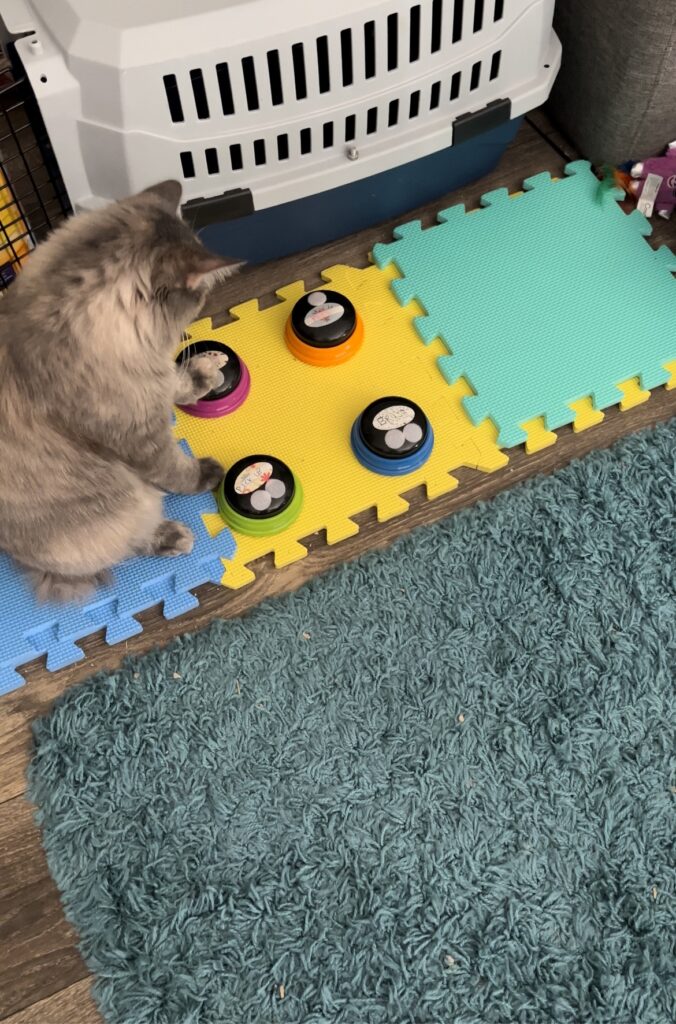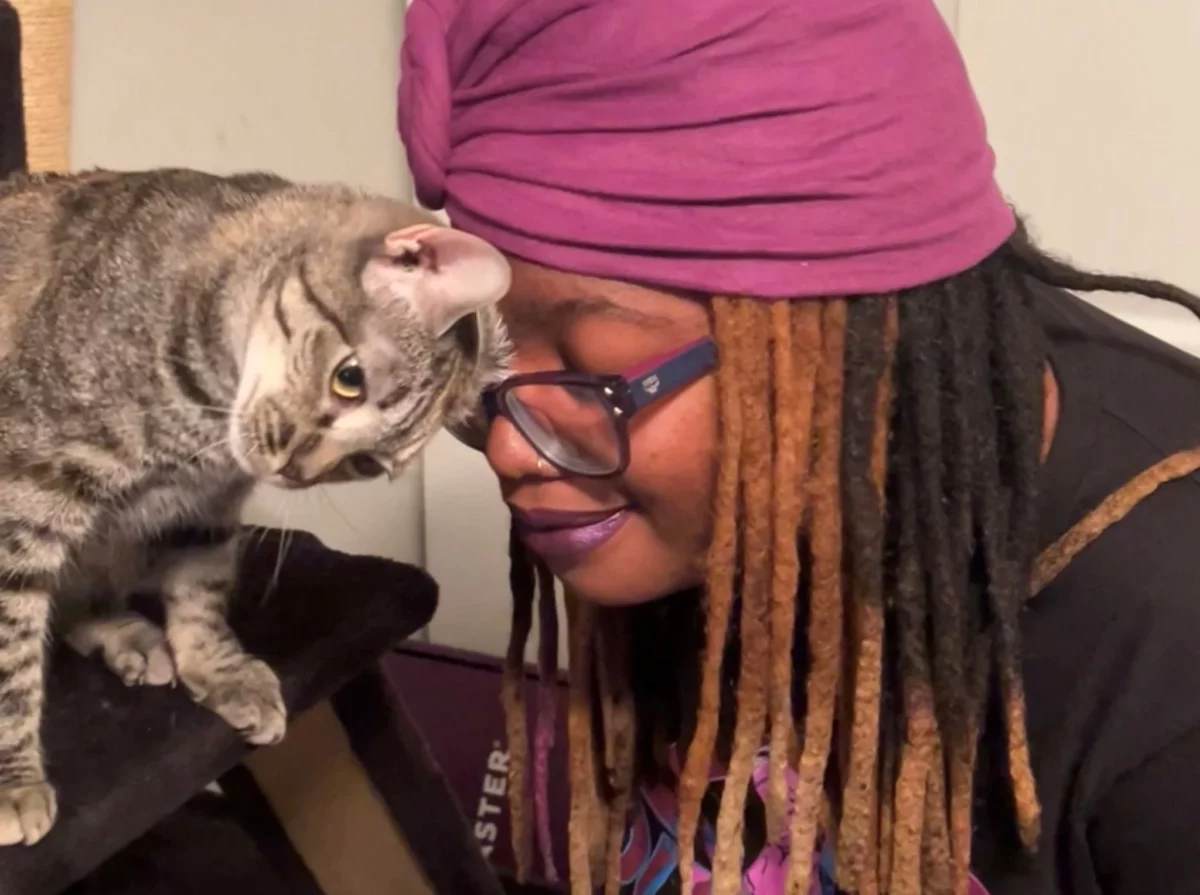Have you ever wished you could talk to your cat? Or that your cat could talk to you? Here’s how one cat lover broke the communication barrier.
After Monesia Greene moved to Atlanta in 2019, she began fostering cats for Best Friends Animal Society. She loved them and wanted to be a successful foster with high adoption rates. A TikTok video helped show her the way.
Discovering Talking Buttons
The video that inspired her showed a dog named Bunny using a talking buttons device to communicate with people. If Bunny needed to go outside, she would press the “Outside” button, which was programmed with the caregiver’s voice saying the word. Other buttons allowed the dog to request actions or activities such as “Brush,” “Walk,” “Scritches,” or “Play.”
Greene ordered Learning Resources buttons from Amazon. She also purchased foam mats, Velcro to help the buttons stick properly, and reusable, erasable labels. If dogs could learn to communicate with these buttons, she was certain cats could as well.
“As a veterinary behaviorist, I can tell you that countless times clients have told me how smart their pets are,” says Lisa Radosta, DVM, DACVB. “They view their pets as they do their children – an extension of themselves. Who doesn’t want a smart cat? Everybody wants that. Of course, a cat who knows a trick or demonstrates some unique quality is more adoptable. That cat may have never been adopted before, but because the adoptive pet parent can see how smart she is or a little bit of her personality, it helps in getting adopted. That’s fantastic!”
From the Beginning
Since she began introducing the buttons to them, Greene has been successful with several foster cats, most recently with one named Autumn. She has taught them to request what they want using the buttons. Some cats might want to be brushed. So the brush button says the word “Brush” out loud when pressed and the cat is rewarded with brushing. Other buttons offer such choices as “Pets,” “Play,” and “Cuddles.”
“Each cat usually masters the button in less than two weeks,” Greene says. “In the beginning, I used to attempt training every chance I got. Then I realized that you really don’t need to train that hard. So I started training for about two hours or less over a day.”
Starting with the word “treats,” she says the word, shows the treat, presses the button for “Treat,” gives the treat, says the word again, then presses the button again. During this process, she places the treat over the button to get the cat to put their paw on it. The goal is to familiarize the cat with the concept of pressing the button and receiving a reward.

After a few days, while holding the treat, she asks, “What do you want? Do you want treats?” Greene then points to the “Treat” button so the cat can go to it and tap it. Once the paw touches the button, she gives the treat, says the word for the cue, then presses the button again. After about one week, Greene says, she changes the training by trying to get them to actually press the buttons. The buttons aren’t as easy for cats to push as they are for dogs, but with consistency they learn how to apply pressure. Most of the time, this training goes by quickly. Ripley took one week to learn, while Momma Cat (pictured above) got the entire process down in two days (her weight of 10 pounds made it easier for her to apply pressure, and she really loved treats). Autumn took about four days because she was pressing the buttons inconsistently, but by the one-week mark, she was pressing more consistently.
Feeling the Success
How does it feel once they finally conquer the buttons?
Greene says, “I feel excited, happy, and relieved. You see their faces and you feel the joy from them because they’re understood. The gap between communication has been bridged. It really builds a bond! Everyone wants to be understood and this really helps with that. They think, make choices, have feelings, and a communication board relays that.”
Can cats learn to communicate by this type of training with recordable buttons? Dr. Radosta says: “Absolutely. Cats are trainable and they communicate with us all the time. If these buttons with recordable words and phrases on them help us communicate with our cats, they will lower the stress that our cats feel because they will be understood and their needs will be met more readily. That is a very good thing for cats and people!”
This article was reviewed/edited by board-certified veterinary behaviorist Dr. Kenneth Martin and/or veterinary technician specialist in behavior Debbie Martin, LVT.








